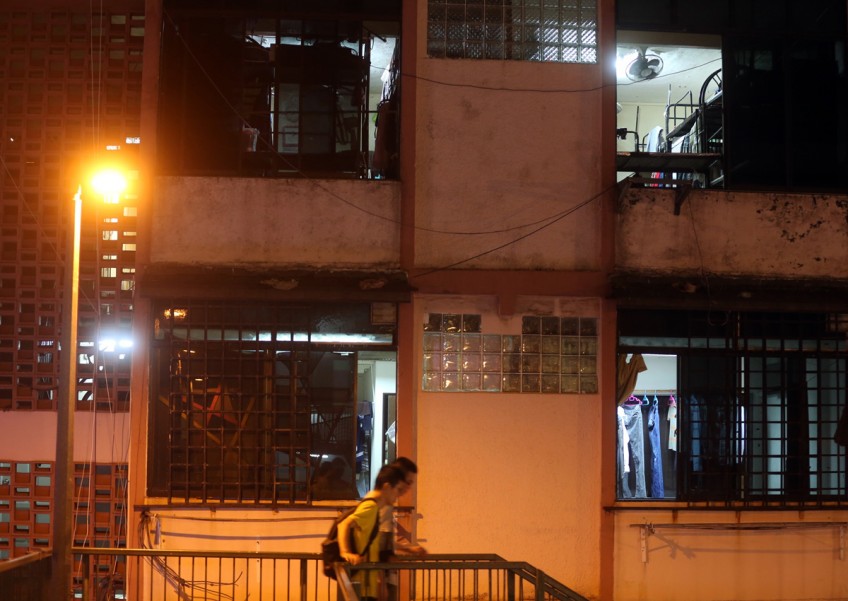Geylang foreign worker homes still overcrowded

A handwritten sign that reads "Private Property Do Not Enter" hangs over an unlit and dirty entrance of an apartment building in Geylang Lorong 21.
Those who do enter are foreign workers, making their way to the shabby and overcrowded units they call home.
Such cramped spaces are a common sight in Singapore's red light district, where six workers lost their lives in fires between last December and April this year.
It has been nine months since the worst fire Singapore has seen in a decade, in terms of lives lost. Still, some building owners in Geylang do not seem to have learnt their lesson.
Multiple checks by The Straits Times over the past three months show that at least five apartment buildings had more than eight foreign workers living in one unit.
Guidelines from the Urban Redevelopment Authority (URA) say private residential properties cannot house more than eight workers.
Four double-decker beds fill a room in a third-floor unit of a Lorong 21 apartment block. The unit, which has four rooms, is home to about 30 workers who also share a bathroom and kitchen.
Similar sleeping arrangements are found in Lorong 8, 10, 13 and 19.
When reporters visited these lodging spaces past 9pm on both weekdays and weekends, foreign workers were having dinner and charging their mobile phones on extension cords - with as many as eight phones plugged into four outlets in one instance.
Electrical appliances like refrigerators and furnishings like mattresses sometimes clutter dark staircases.
Said a construction worker from Bangladesh, who declined to be named: "It's dangerous because sometimes we see sparks from the electrical sockets."
Another construction worker, a man from China whose surname is Xu, said: "I know that my housing is not the best but my company told me to stay here. And it's cheap too."
Workers pay about $200 each a month, compared with $300 in a purpose-built dormitory with coffee shops and recreational facilities.
A residence is deemed to have been converted into an unauthorised workers' dormitory if the number of occupants exceeds eight, URA said in an e-mail reply to media queries.
The authority, which conducts checks on unauthorised use of private properties with the Ministry of Manpower (MOM) and Singapore Civil Defence Force, also said it has investigated about 1,600 cases so far this year. The number includes cases such as short-term stays. Last year, it looked into 2,500 cases.
During a parliament session this year, MOM said agencies "systemically inspected" more than 600 units known to be housing foreign workers in Geylang between December and May.
It is not easy for outsiders to enter such illegal housing. One apartment block in Lorong 10 has a metal gate with a padlock while a password is needed to enter a shophouse in Lorong 8. Both seemed to have lookouts on standby.
Debbie Fordyce, executive member of human rights group Transient Workers Count Too, said that foreign workers choose to live in private properties in Geylang because the area is near public transport, temples and banks where they can remit money. "The issue of safety is far below the convenience and the cost," she added.
awcw@sph.com.sg

Get MyPaper for more stories.